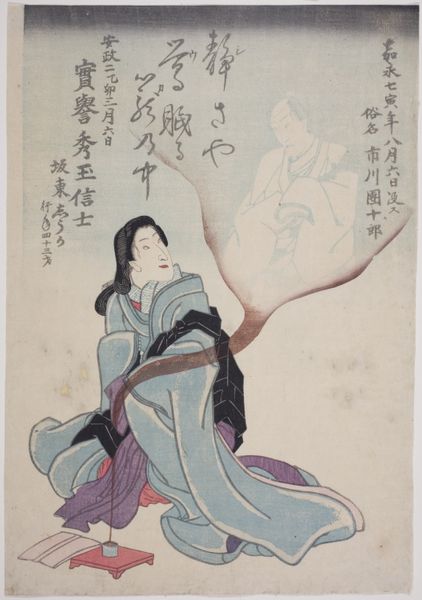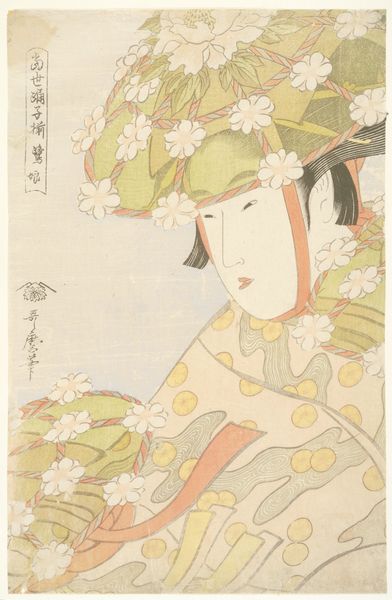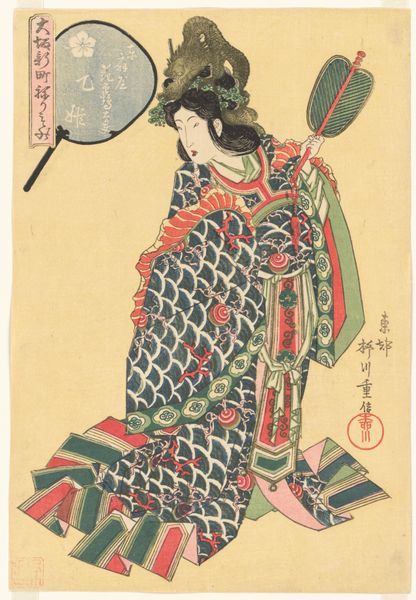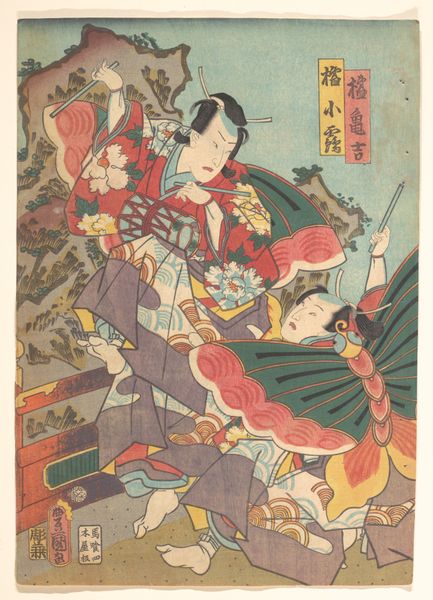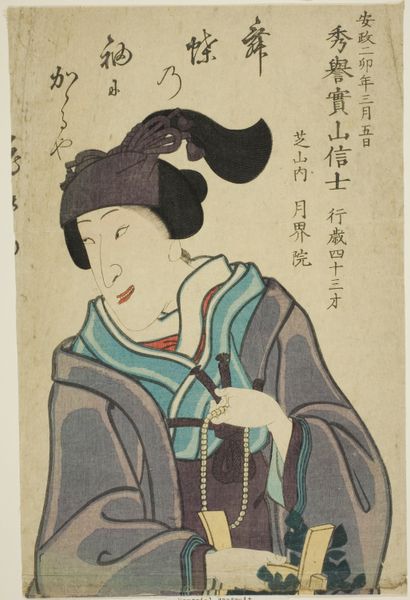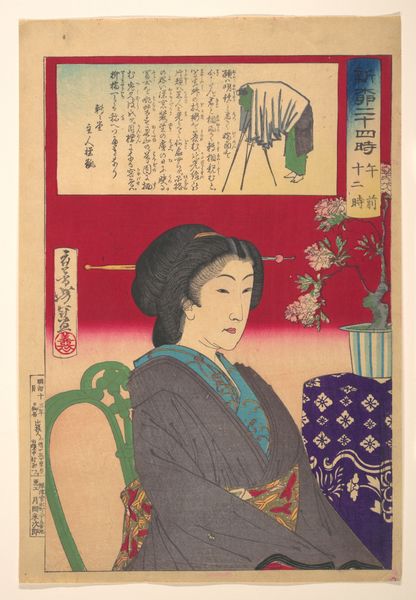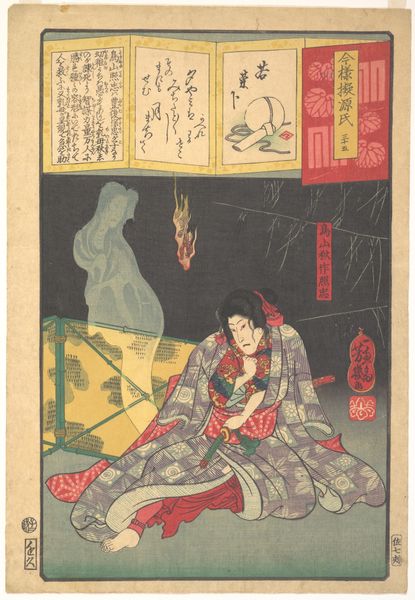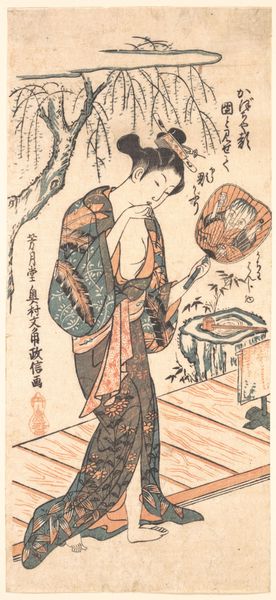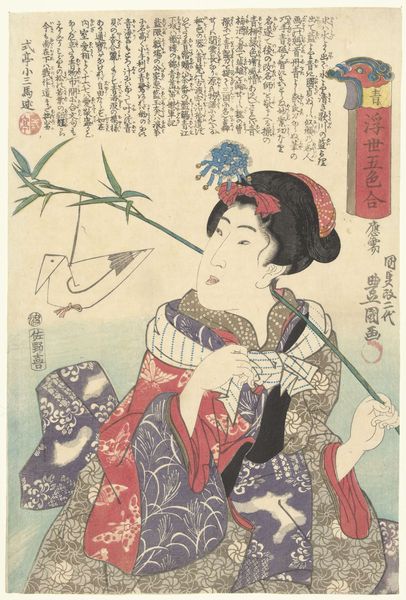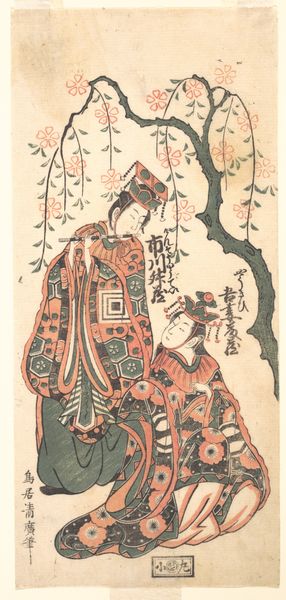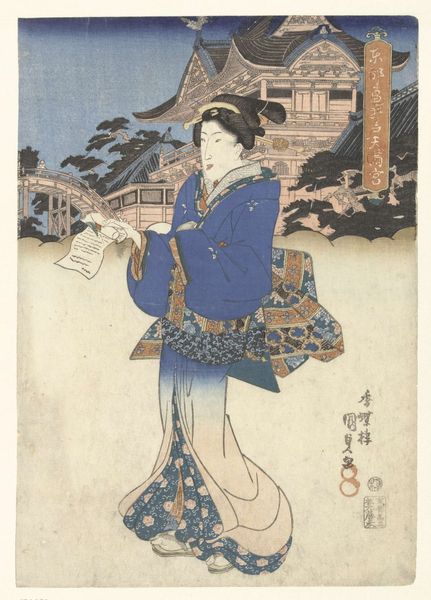
print, watercolor, earthenware
#
portrait
#
water colours
# print
#
asian-art
#
ukiyo-e
#
watercolor
#
earthenware
#
plant
#
earthenware
Dimensions: Image: 14 7/8 x 10 in. (37.8 x 25.4 cm)
Copyright: Public Domain
Curator: This print by Utagawa Sadahide, created around 1860, is titled "Goods for Sale" and is now part of the Metropolitan Museum of Art's collection. The palette is arresting, isn't it? So vibrant! Editor: Indeed, the striking blues and reds immediately grab the eye. But there's something slightly unsettling about this supposed "sale." Is it an exchange of goods, or are we viewing a portrait, suspended in what looks like… commodity culture? Curator: Let's consider the time it was produced. This was a period of intense upheaval and engagement with the West, influencing both aesthetics and social values. How might this piece be responding to that particular cultural moment? Editor: Perhaps. Utagawa, well known for his Yokohama prints of foreigners, could very well be using this print as a way to both exoticize and somewhat domesticate an idealized, foreign notion of feminine beauty for Japanese audiences, who, by that time, may already have had sustained, complicated engagements with Europeans or Americans in Yokohama. Curator: And the positioning of the potted plant on the table? It almost feels like it’s balancing the framed portrait. Are we invited to interpret this plant as an allegorical figure here, almost reminiscent of the memento mori tradition, with that striking, almost barren red foliage. Editor: Memento mori? That seems strong. I am hesitant about interpretations that fall back on established canons to deal with complex depictions like these. How might this be viewed outside of established frameworks, like a subversion of Edo Period expectations or as the genesis of new visual forms, a result of the commercial opening of Japan in the late 19th century? Curator: Fair point, there's an argument to be made that these pieces—ukiyo-e—depict scenes of everyday life that hold intrinsic cultural weight, so this is a moment where Eastern artistic modes collide and mix, producing distinct forms for that particular time period. I see what you're saying—it does suggest transformation on a visual level. Editor: Perhaps "Goods for Sale" then presents the dawn of globalization: both a moment of immense opportunity, and fraught, complicated tension for the peoples, women, and places implicated in it. Curator: What a truly captivating intersection between art history and cultural observation. Editor: Absolutely, examining these visuals can illuminate the multifaceted layers of history and the enduring legacy of globalization.
Comments
No comments
Be the first to comment and join the conversation on the ultimate creative platform.

